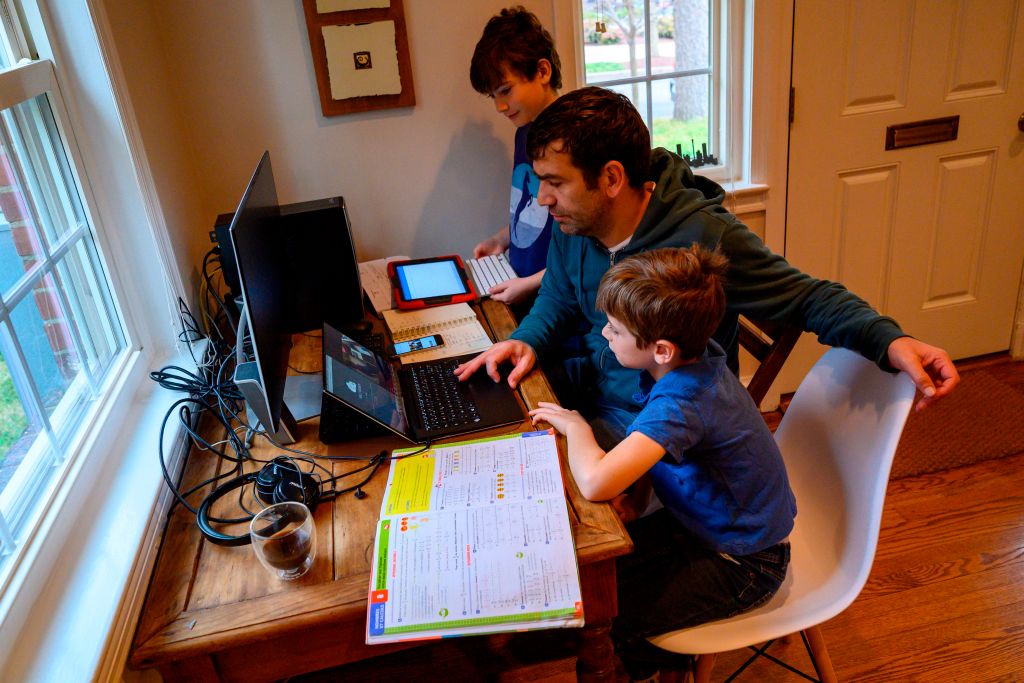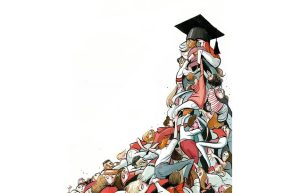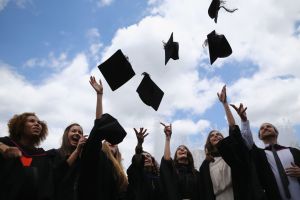As school districts scramble to plan for the new school year during a global pandemic, many parents are taking matters into their own hands.
States around the country, from Virginia to Kansas to Texas, have reported large rates of increased interest from parents in homeschooling their kids this fall. North Carolina’s homeschool application website recently crashed due to overwhelmingly high levels of submission. National and state polls show anywhere between 15 to 40 percent of families expressing a greater likelihood that they will homeschool during the COVID-19 pandemic. Interest doesn’t always translate to action, but experts say large numbers of parents may consider homeschooling in the coming weeks as more and more school districts back out of plans for in-person instruction.
‘I think we will continue to see an increase — exactly how much I don’t know,’ T.J. Schmidt, a staff attorney for the Home School Legal Defense Association told me. ‘We’re talking to many many families who are submitting notifications to local school districts and withdrawing from online programs.’
Michael Hansen, a senior fellow at the Brookings Institution and the director of the Brown Center on Education Policy, told me that educational research on homeschooling, while sometimes scant due to limited government oversight, has traditionally shown homeschooled students performing about the same, if not better, than public school students. In conjunction with research showing virtual learning to be inferior to in-person learning, this makes homeschooling a reasonable option during the pandemic. There is no guarantee, Hansen noted, that new homeschooled households will perform as well as those that have traditionally chosen the method.
One schooling method that has gained popularity is micro-schooling, referred to in recent weeks as ‘pandemic pods’. The idea is that small groups of students get together in quarantined classes, which are taught by parents or paid tutors. This combines the advantages of traditional in-person instruction with the flexibility of homeschooling, while also mitigating the risks of exposure to the coronavirus. Tens of thousands of parents are using Facebook groups to organize these ‘pods’ in their local areas.
This growing interest in micro-schooling has been met with criticism within the media. Clara Totenberg Green argued in the New York Times that these homeschooling methods will put less fortunate children at a disadvantage, as their parents don’t have the time and resources to ditch public schooling. Corey DeAngelis, the director of school choice at the Reason Foundation and an adjunct scholar at Cato, told me that while these critics have pointed out a legitimate flaw, they fail to propose any tangible alternative.
‘They’re missing the obvious solution, which is school choice or education saving accounts to allow the funding to follow the child to wherever they’re getting an education,’ he told me. ‘That would allow less advantaged communities and families to afford micro-schooling too.’
DeAngelis is advocating for states to take the money they invest in students for public schooling — which ranges anywhere from $8,000 to $15,000 annually — and give it directly to parents to spend on whatever schooling method they feel best suits their child. He compared this idea to food stamps, as recipients have the freedom to choose which grocery store to purchase their food.
‘There is no legitimate argument against this unless you’re trying to protect a system,’ he told me, adding that public schools have little incentive to institute effective plans during the pandemic, as most students have no alternative educational option. ‘They’re getting your money no matter what.’
Some states are adopting versions of this idea during the pandemic. Pennsylvania recently opened Education Scholarship Accounts, which in this case provided families with $1,000 for school-related expenses, starting with those who qualify for the free and reduced lunch program.
[special_offer]
Schmidt was hesitant about policies that shift public funds directly to homeschoolers, fearing that the money could come with new regulations that take away from the unique flexibility of homeschooling. He said his organization prefers tax credits for homeschooling families, which are prevalent in Illinois, Louisiana and Minnesota.
Schmidt was homeschooled and he and his wife currently homeschool their seven children. His advice to first-time homeschooling parents? ‘Relax and take a deep breath’. He emphasized that the freedom of homeschooling allows parents to be far more efficient in their teaching than traditional schools, which often have to deal with large class sizes.
‘You don’t have to try to accomplish everything in one day,’ he told me.


















